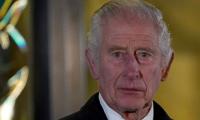Experts have identified the lack of humidity in the air despite the extremely hot weather persisting in Karachi for the last four days as a major reason why there are fewer chances of heat stroke and heat exhaustion, saying it is a mixture of high humidity and temperature that killed hundreds of people in the metropolis during the month of Ramazan in June 2015.
“High temperature with high humidity ranging between 70 and 90 per cent in the air had increased the discomfort level to such an extent in June 2015 that people started fainting as there was no electricity and many of them were fasting also. The body’s regulatory system failed under high temperature coupled with high humidity and many people died at home, workplace or on the way to hospital,” said Pakistan Meteorological Department Director General Dr Ghulam Rasool on Monday.
Talking to The News, he recalled that there was a low pressure area formed in the Arabian Sea in the mid of June 2015, which had turned into a well-marked depression that had cut off the sea breeze towards Karachi, but under its influence, the humidity level also increased and temperature soared to 46 degrees Celsius between June 20 and 22, 2015.
“Due to high humidity with high temperature, the feel-like temperature increased to 51-52 degrees Celsius, and in the absence of electricity, lack of water and because of fasting, people started fainting and dying in Karachi during that deadly heatwave,” Dr Ghulam Rasool recalled.
But what is different in the ongoing heatwave when the temperature has risen to 44 degrees Celsius, many people are without electricity for hours every day, several parts of the city are facing an acute water shortage and it is also the month of Ramazan when most of the people keep fast or at least don’t eat and drink publically in Pakistan?
“For last two to three days, humidity levels dropped to less than 10 per cent in the day timings although the temperature remained between 42 and 44 degrees Celsius. Warm and dry winds from north- and north- westerly direction kept on blowing and although they produced a heat affect, nobody complained of heat stroke and heat exhaustion and so no mass casualties have been reported in the city,” Dr Ghulam Rasool explained.
He said increased awareness among the people had also played a major role in preventing mass casualties as most people avoided direct exposure to the sun, remained indoors and used other precautionary measures.
“People have been seen using wet clothes to cover their heads when they venture out in the sun while many prefer to remain indoors and avoid walking or walking under the sun in the intensely hot weather.”
The executive director of Jinnah Postgraduate Medical Center (JPMC), Dr Seemin Jamali, also blamed the high humidity in the air for the 2015 lethal heatwave, saying that during those days, people complained of difficulty in breathing and extreme hot sensation, and many collapsed suddenly without any warning due to hot and humid weather.
“But these days, a warm wind is blowing and although it is baking people, they are fainting or collapsing. Most people are also taking precautionary measures themselves so we are not seeing any heat stroke patients at our casualty,” Dr Jamali said.
Another health expert, Dr Muhammad Saif, who saved many lives by providing first aid to heat stroke patients, remarked that people were more prepared, aware and conscious these days, and that helped them to stay healthy and alive.
“The heatwave in 2015 was very lethal and killed people as the majority of Karachiites had not experienced any such thing in decades. They were unaware about what a hot and humid day can do to them and their loved ones. But this time round, people are more aware and ready to brace the heat,” he observed.
The picture shows a pharmacy. — AFP/FileThe Karachi administration has launched a campaign to check the expiry dates...
In this still, Karachi Mayor Barrister Murtaza Wahab addresses an event on April 25, 2024. — Facebook/Barrister...
In this still, Sindh Inspector General of Police Ghulam Nabi Memon chairs a meeting at the Central Police Office on...
Representational image shows police tape. — AFP/FileAn elderly man who ran a general store was shot and killed in...
A handcuffed suspect stands behind the bars with a policeman standing outside the jail in this undated image. —...
In this still, Sindh Chief Minister Syed Murad Ali Shah meets federal energy minister Owais Ahmad Khan Laghari in...







